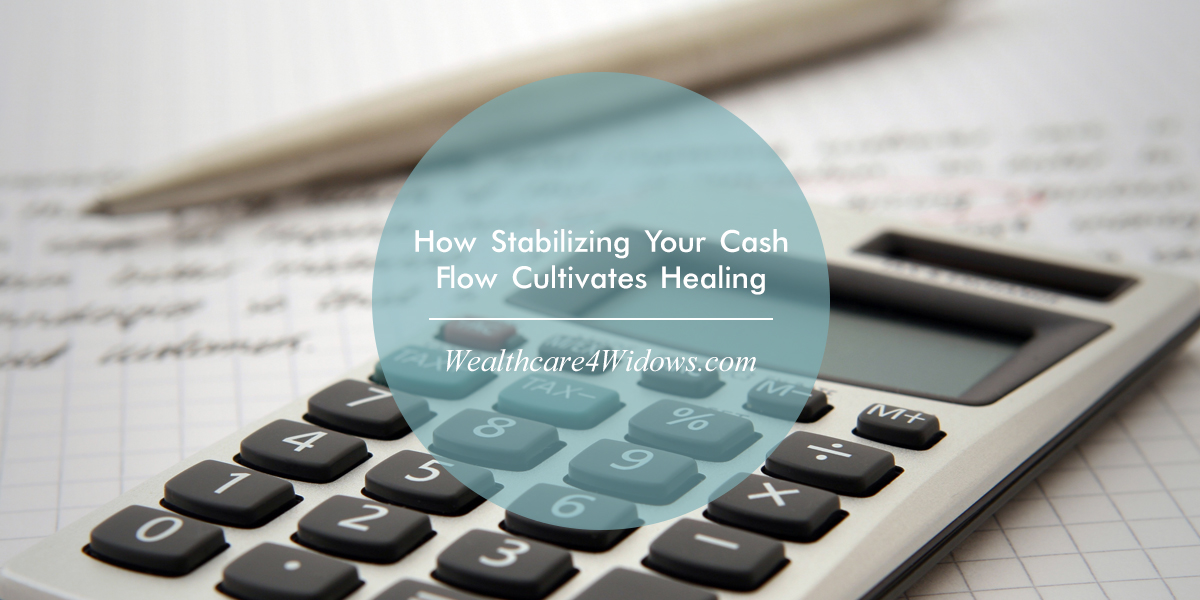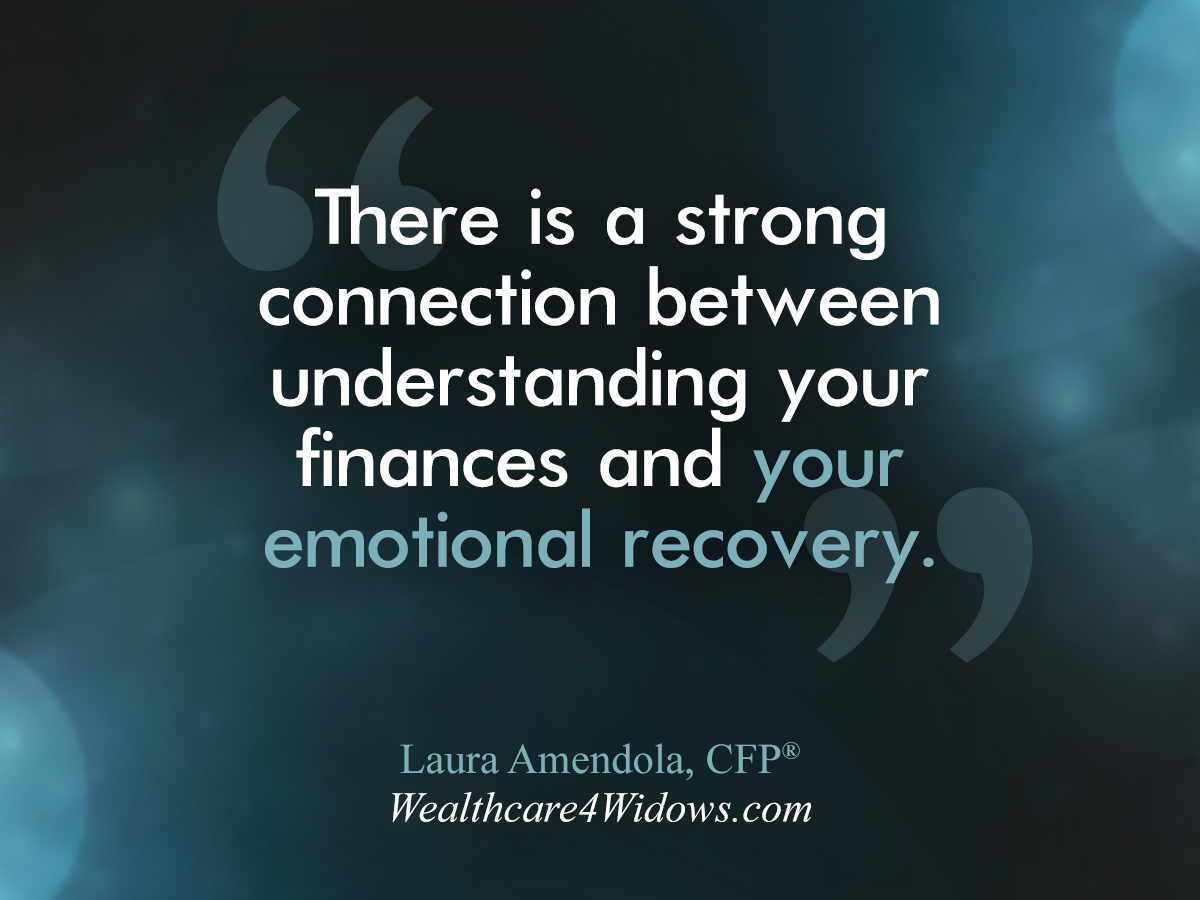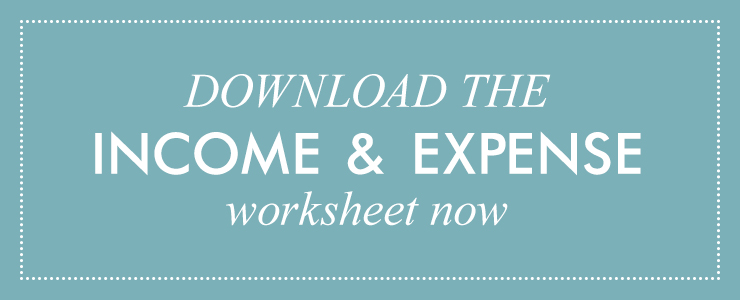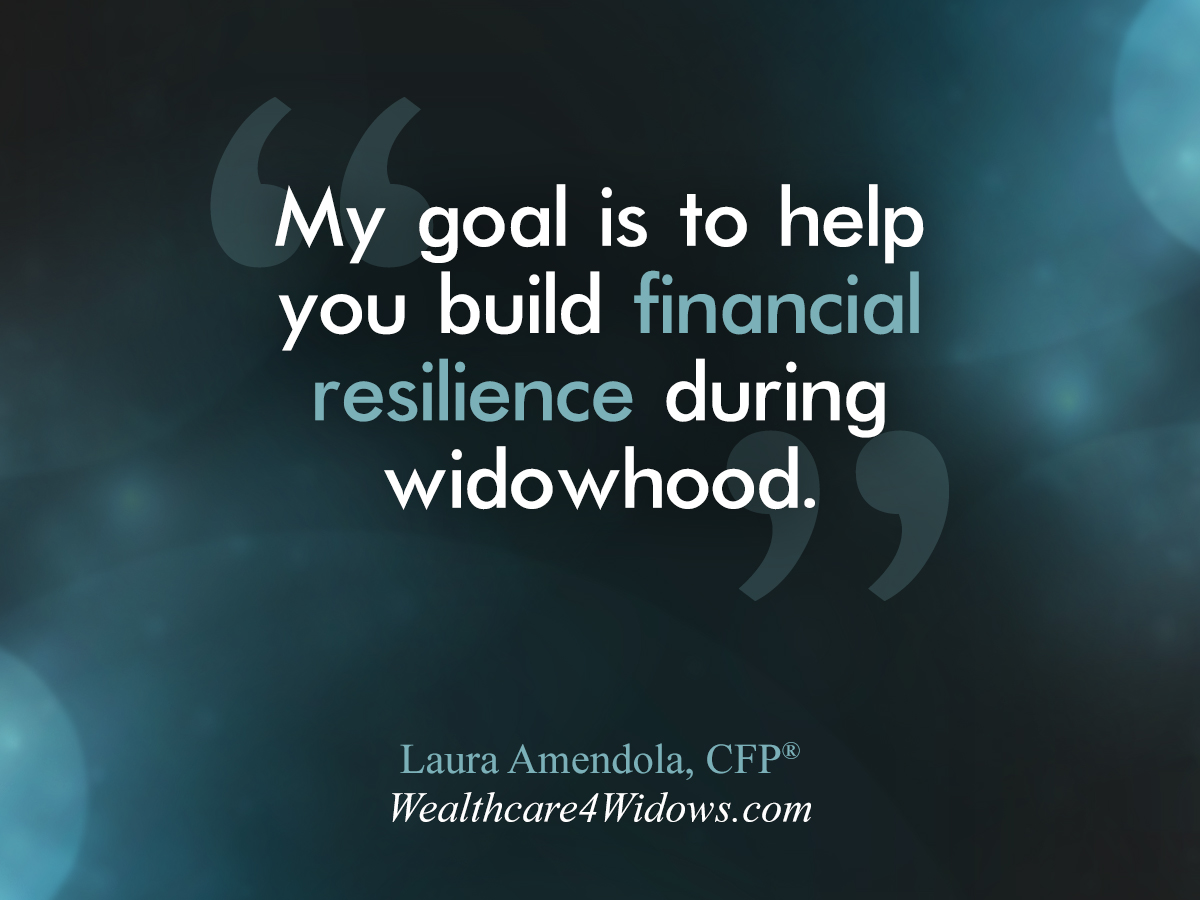
When your husband dies, you may constantly ask yourself, “Do I have enough?” That lack of “enough” comes from experiencing a loss so deep – your partner, best friend, co-parent, etc. – that it begins to creep into other areas of your life making you feel confused and even more alone.
This is one of the reasons I started working with widows because there is a strong connection between understanding your finances and your emotional recovery. You are suddenly alone, overwhelmed, and powerless to anything more than what feels like riding along a turbulent sea of sorrow and distress.
Grieving while facing a lack of financial information or stability can cause debilitating anxiety that would weaken anyone’s emotional healing. I’ve seen a widow with an estate full of millions act “poor” long after probate and taxes have been finalized.
This is why I always make it a top priority to create structure – gentle baby steps – for my clients to help them cultivate clarity with knowledge and ease.
YOU CAN DO IT!
The first step you have to take is to remind yourself that you are capable of handling your financial affairs. Even if you have to say it out loud to yourself a few times a day – do it! Often reminding ourselves of our own power can slowly begin to shift our mindset.
As you start to build confidence, the next best thing you can do is give yourself permission to not be all-knowing when it comes to your finances. You simply need to be involved. In fact, enlisting the support and and knowledge of a financial professional can significantly reduce that fear so you can cultivate healing. This trusted guide can help you navigate the sea of numbers and help you organize and prioritize what you need going forward.
YOUR FINANCIAL FUTURE…
Nothing works well as a little knowledge and organization when it comes to your finances. This will allow your mind to settle because you now have awareness. You will likely feel more balanced and able to get back to healing emotionally rather than constantly carrying that stress around with you.
That’s why I created the Income and Expense Worksheet for my clients. This is the first worksheet we work on together because in my opinion it’s the key to which all other things/financial decisions will revolve around, such as investments and housing.
In fact, we start with this no matter what – even multimillion dollar wealth management clients – as I believe it is the pillar of all financial planning decisions. What I am looking to determine for a widow is her “gap” (between income and expenses) and then how to best fill that gap with appropriate strategies – reduce expenses, supplement with assets, or other alternatives with her.
Simple addition and subtraction is all you need to begin moving forward with clarity about your finances.

A LITTLE ADDING AND SUBTRACTING…
This will tell you the two most important things you need to know: what you are worth and how your expenses balance out against your income. Once done, it will help you better answer all those nagging questions such as, “Am I going to make it?” and “Do I have enough?”, “Can I afford to keep my house or my car?” or “Do I need to go back to work?”
Once you know your needs/situation you can make better decisions such as when choosing from several different survivor benefit payout options, such as pension payout choices; how to use or invest life insurance proceeds, and whether or not to pay-off your mortgage or eventually sell your home.
The more quickly you understand your financial situation, the less anxious you will likely feel, which in turn will contribute to your emotional healing. In general, you want an idea of what it takes to maintain your standard of living with as few disruptions as possible.
You may discover you need more income than you are currently receiving. Do not panic if this happens to you. It is very common when doing your initial evaluation. Your financial professionals can help you rectify the situation.
My team and I always make sure to go over every possible benefit that might be available for a widow. Often, these are benefits you may not have fully known about or understood before. Remember, you don’t know what you don’t know so always ask if you think you’ve missed something.

EASY EVALUATION…
Using the information about what benefits are available for you, let’s begin to estimate what income you can expect to receive. The first page of your tax return can be very helpful to determine what income amounts have been coming in prior to the death of your husband and from what source.
When looking at your sheet, begin here…
If you work, include your employment income. Check for income on the tax return from promissory notes, rental properties, or a business interest. You are likely to continue receiving the income from these items if you inherit the assets.
Next, find out how you spend your income. Review your checkbook or the online transaction history of your bank accounts to determine what your expenses have been. Begin to enter your fixed or monthly living expenses into the worksheet – housing, transportation, food, and healthcare are the big items to fill in first.
By going back through last year’s history of expenses, items often overlooked will emerge, such as gifts, clothing, and travel. These are called discretionary expenses, and are important to know in order to project what you are accustomed to spending.
Now that you have calculated your income and expenses, total both categories to find out if you have more than enough income (positive cash flow) or insufficient income (negative cash flow).
BE GOOD TO YOURSELF…
Remember you are still in the fact-gathering stage, so don’t panic if you have a negative cash flow. Conversely, you may find you have sufficient income to cover your current expenses. Resist any spree-spending at this stage. Keep your long-term situation in mind. What is sufficient income today may not be ten years from now.

When planning, my team and I work to plan for future changing expenses and to help your income keep pace with inflation and the forever increasing cost of living. From here you can find solutions that will be important to maintain a healthy mental attitude regarding your money as you move forward on your own.
The bottom line is to begin moving forward with building financial resilience during widowhood. Let the Income and Expense Worksheet help you do that with more ease and confidence. You can download your copy here. Everything else revolves around it and you can refer to it again and again. Remember that all you have to do is take small baby steps towards financial and emotional healing, without fear and overwhelm but with clarity and confidence.
Wishing you ease, grace, and financial success,
~Laura
Any opinions are those of Laura L. Amendola and not necessarily those of RJFS or Raymond James.



 Thank you for stopping by. Please feel free to
Thank you for stopping by. Please feel free to 